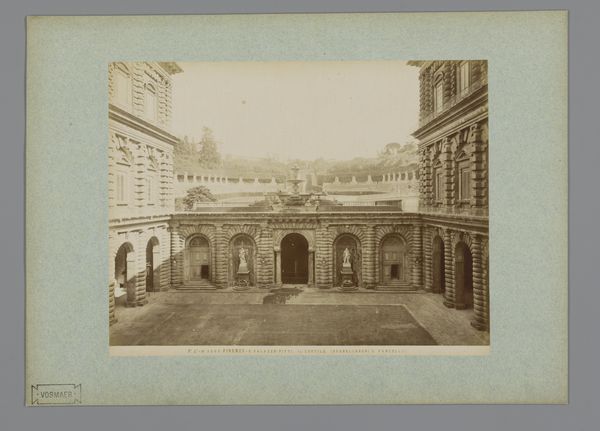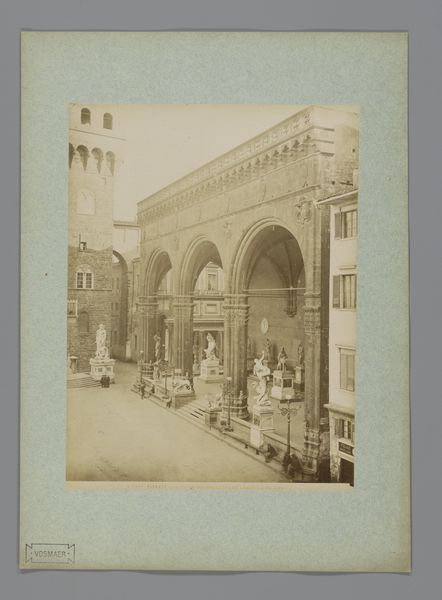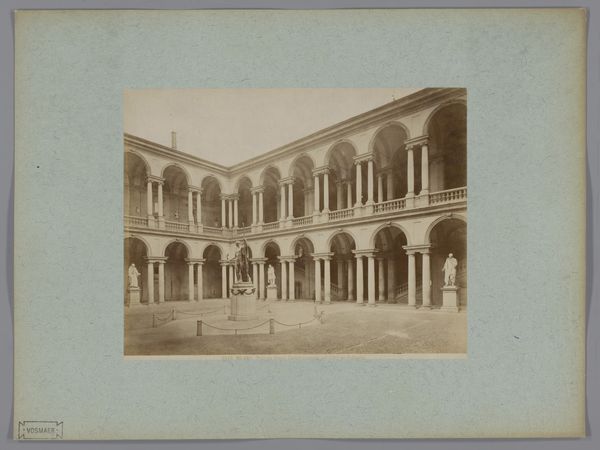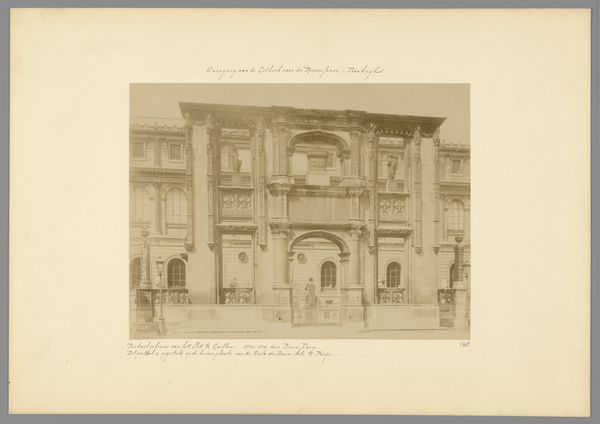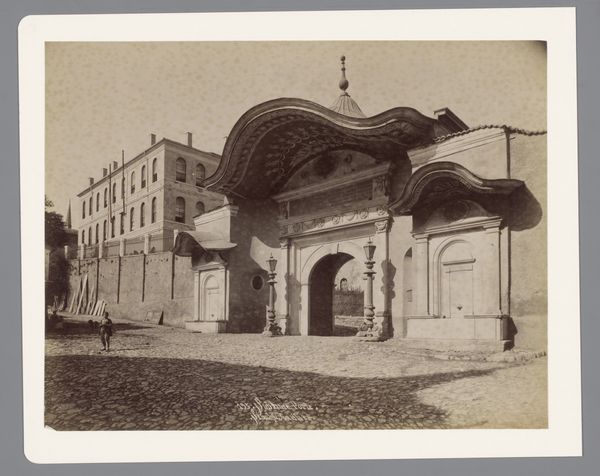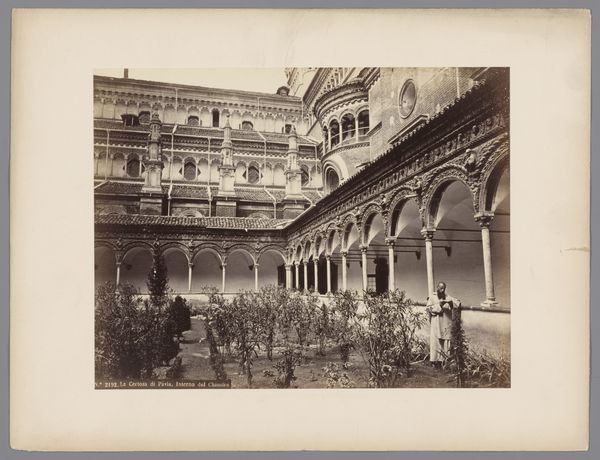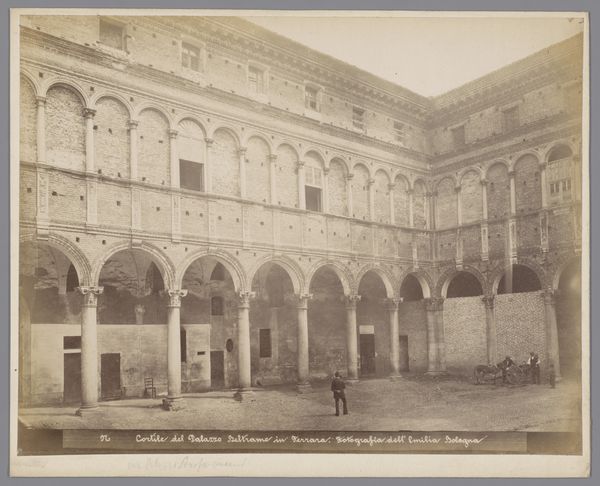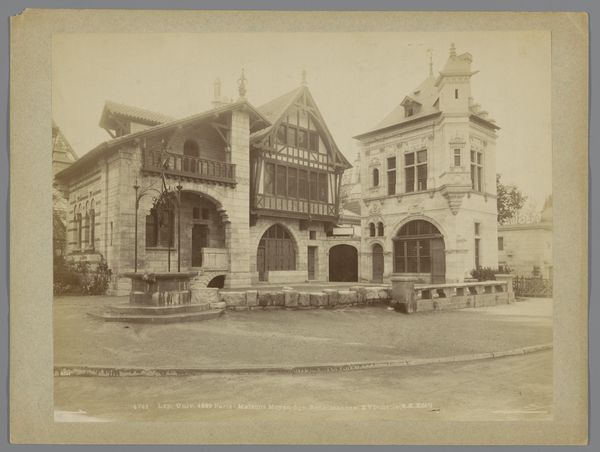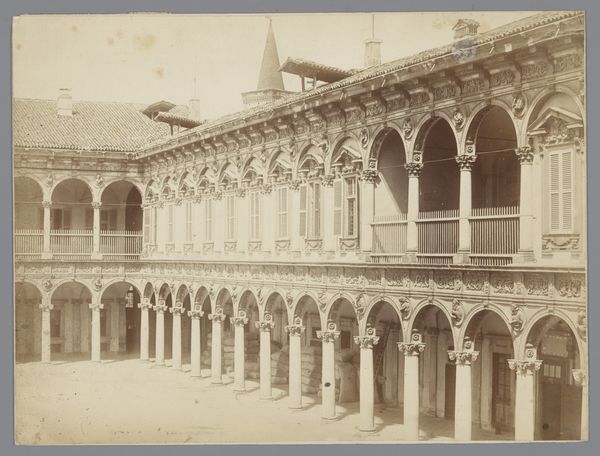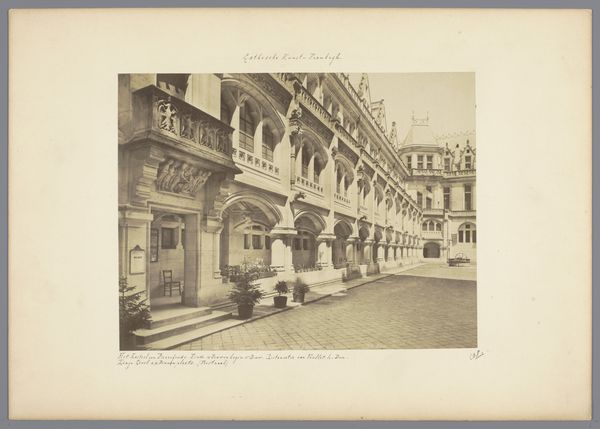
photography, albumen-print
#
photography
#
orientalism
#
cityscape
#
genre-painting
#
albumen-print
Dimensions: height 107 mm, width 167 mm
Copyright: Rijks Museum: Open Domain
Curator: This albumen print, titled "Binnenplaats van het Grazer Landhaus, Oostenrijk," attributed to F. Völke, invites us to explore a 19th-century Austrian cityscape. The dating suggests a timeframe between 1867 and 1900, a period of significant cultural and political transformation. Editor: The overwhelming sepia tone lends a dreamy, almost surreal quality to the image. It's serene, yet something feels slightly off. The scene feels incredibly posed and artificial. Curator: That's perceptive. Early photography, especially for architectural subjects, involved considerable staging. The figures, the carriage, are carefully arranged. This presentation emphasizes civic pride and progress through its portrayal of the Landhaus—a critical administrative building in Graz. Notice how the photograph's very construction mirrors institutional aesthetics, controlling even lived space. Editor: Exactly. And who are these figures and for whom was this photographed? The seemingly romantic representation conceals that period's complex intersection of rising nationalism, and rapidly changing power dynamics between different social classes, particularly between landholders and burgeoning middle classes who were just beginning to have greater political influence. Curator: The "orientalism" tag also raises interesting questions. The Renaissance courtyard style—with its arcades and loggias—was itself, in its time, viewed as an exotic influence from Italy, becoming a familiar motif throughout Central Europe. It highlights how cultural exchange, especially through architectural motifs, has historically played a vital role in defining national identities. Editor: Though, doesn’t that “cultural exchange” usually translate to adopting without crediting other sources, mostly exoticising, misinterpreting, and appropriating motifs as well as ideas in the hand of mostly colonizers? The staged elements appear as a performance for an imagined audience. Curator: True, we can consider that through lens of unequal power structures—how these curated scenes reflect an aspirational vision shaped by dominant narratives and potentially concealing socio-economic disparities within Austrian society. Editor: In the context of that moment and viewed now, as we stand, I can see the value in understanding those tensions, as a constant reminder about social dynamics. Curator: Ultimately, examining images like this encourages us to see photographs not just as neutral documents but as constructed narratives. A window into the past that also prompts reflections about our present.
Comments
No comments
Be the first to comment and join the conversation on the ultimate creative platform.
